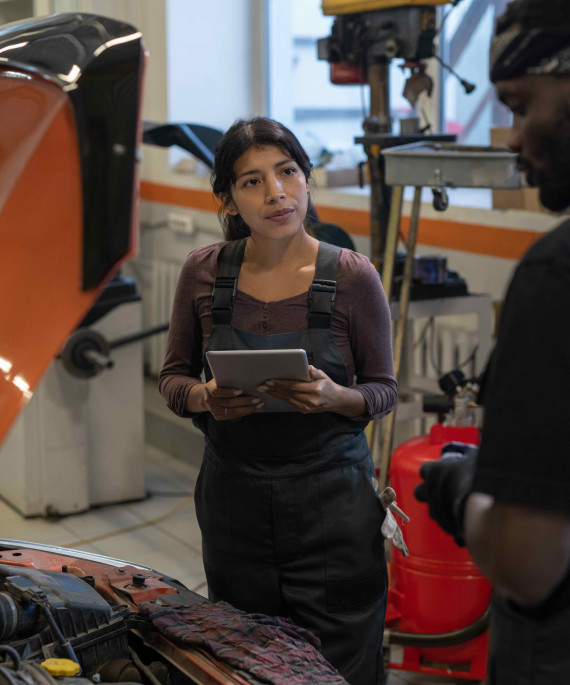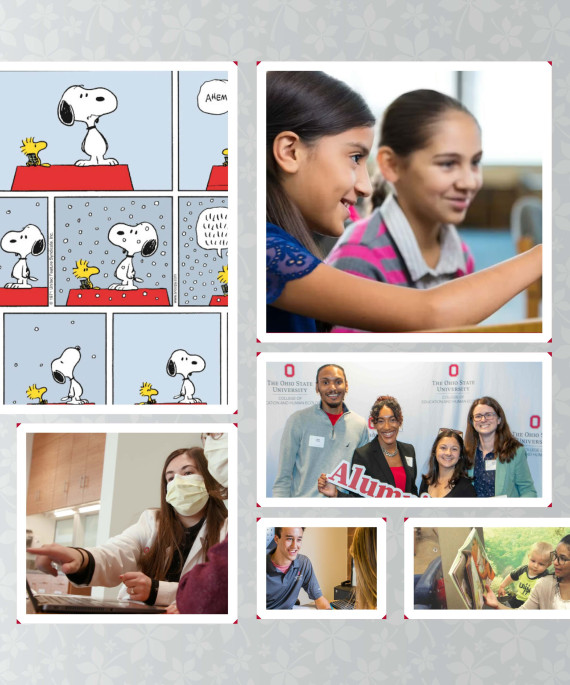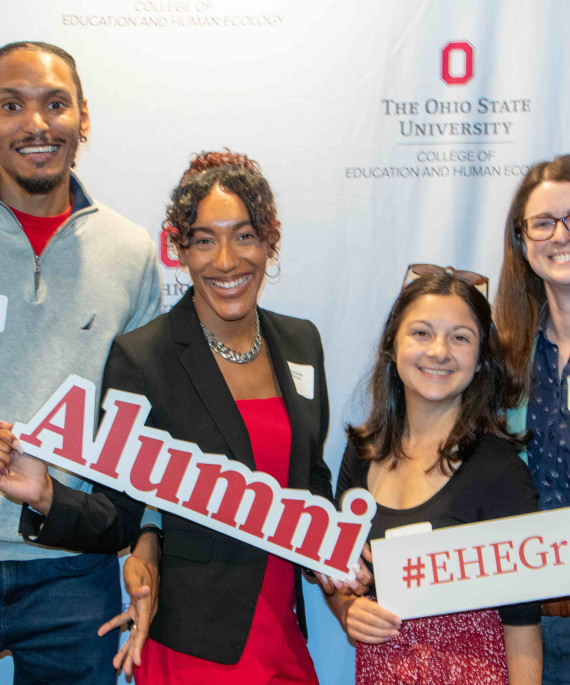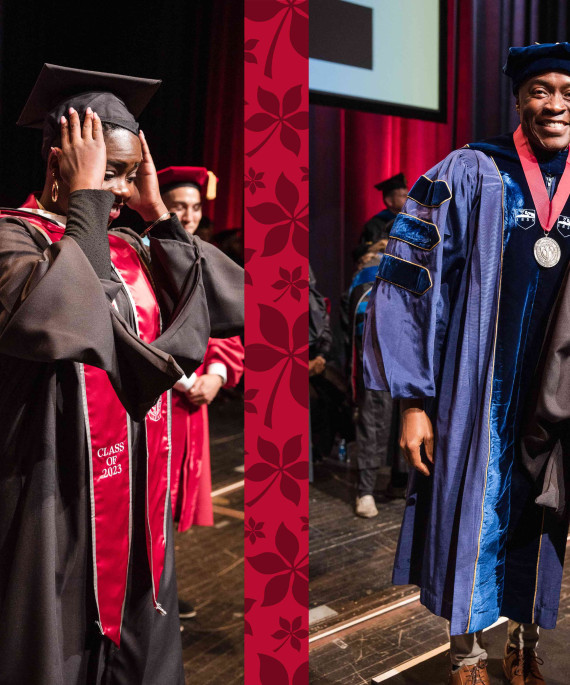
Educator helped broaden research to support kindergarten-through-college participation in engineering
James L. Moore III has always been an innovator. The EHE Distinguished Professor of Urban Education is known for his years of groundbreaking research in minority academic achievement. He’s especially knowledgeable about how to encourage minority males and women to study engineering, from kindergartners to college students.
Most recently, his expertise brought him another innovative first, both for Ohio State and for the nation.
He completed nearly 2.5 years as the only non-engineer ever to serve as program director for Broadening Participation in Engineering in the Engineering Directorate at the National Science Foundation (NSF).

During his tenure with the second largest NSF directorate — with a budget of nearly $1 billion — Moore served as the face of the nation for the Broadening Participation in Engineering program. He was the lead in his agency for anything related to broadening diversity, inclusion and participation in engineering.
The directive for his work came from NSF Director Frances A. Córdova: “Our nation’s future prosperity relies on advancing the frontiers of science, and reaching our full potential requires including all Americans in that effort,” she said.
Moore’s annual budget of nearly $8 million allowed him to fund groundbreaking research to broaden participation in engineering. Grant recipients were located throughout the United States.
“In my opinion, we need a collective impact approach to improve education outcomes for underrepresented groups, if we want them to pursue engineering fields,” said Moore, who is also executive director of the Todd Anthony Bell National Resource Center on the African American Male, as well as interim vice provost for Diversity and Inclusion and interim chief diversity officer, all at Ohio State.
“This is a national imperative — that we identify solutions to underachievement and low achievement among many vulnerable educational groups.”
Building an educational pipeline for engineers, in Alaska and around the nation
Moore recalls one high-impact project he funded proposed by Vice Provost Herb Ilisaurri Schroeder at the University of Alaska Anchorage. Schroeder founded the Alaska Native Science & Engineering Program (ANSEP), which has been transforming education across the state since 1995.
He is known for working with students from rural communities of indigenous people — starting with them during their middle school years and ending at the graduate level.
“Seventy-seven percent of his students are algebra-ready by eighth grade,” Moore said, “when only 26 percent of the nation’s eighth graders are algebra-eligible.”
Since ANSEP’s founding, the University of Alaska has awarded baccalaureate degrees to 600 Native American scientists and engineers. More than 2,500 students from sixth grade through doctorate degrees are currently in the ANSEP pipeline.
Two of Schroeder’s former students are the first Alaska Native engineering professors ever.
Schroeder builds success for students by involving numerous stakeholders in ANSEP, including engineering faculty, K-12 teachers and administrators, industry and philanthropists.
“I felt that Herb’s work with Alaska Natives had major implications for other demographic groups, such as African Americans and Hispanics, as well as for school districts,” Moore said, “especially in economically depressed communities such as inner cities and regions such as the Mississippi Delta, rural America, Appalachia, the Black Belt region and Indian reservations.”
Moore provided an NSF grant for Schroeder to host a dissemination conference at the University of Alaska Anchorage. Nine universities were targeted to attend. Their purpose was to learn ANSEP’s exemplary practices and scale them up in their own regions to broaden participation by underserved populations in engineering.
Each team at the January 2018 conference had a representative from the same 10 partner categories that Schroeder includes in ANSEP. Each university is enthusiastic about its likelihood of success and impact in replicating the Alaska program. “I believe that the nation should take notice of Herb’s work with Alaskan Natives,” Moore said.
“We have been working with more than 70 strategic partner organizations for 23 years to develop a comprehensive, longitudinal model aimed at bringing socially and academically prepared students into the university,” Schroeder said.
“We focus on excellence in all we do. My students are among the very top students in the nation. The Urban Institute found that ANSEP’s success offers important lessons for other STEM education programs. Dr. Moore has helped us initiate the process to move the ANSEP model to other regions in our country so we can once and for all level the playing field for minority students.”
A legacy that builds into the future
Moore feels privileged to have supported so many worthy junior and senior faculty projects from various institutional-types while at NSF.
“I am especially proud that I funded many investigators from minority-serving institutions,” he said. “More projects working with kindergarten through 12th-graders.”
A few additional projects that Moore funded while at NSF are:
- A study by faculty at the University of Alabama Huntsville to determine methods to improve STEM education in economically distressed regions of Alabama, with an emphasis on school systems in the state’s Black Belt.
- A study by faculty at the University of Minnesota Twin Cities with Oklahoma State University to pinpoint factors that influence Native Americans’ interest in and aspirations to become engineering faculty.
- A study by faculty at Iowa State University to determine how to better serve African American males in colleges of engineering so they persist in college and the profession.




